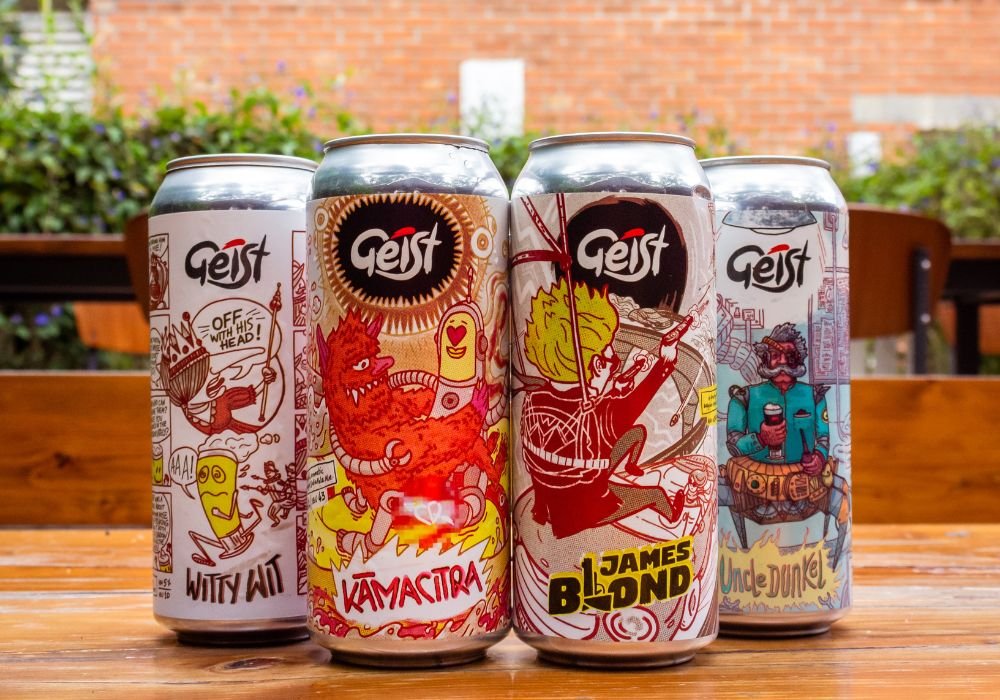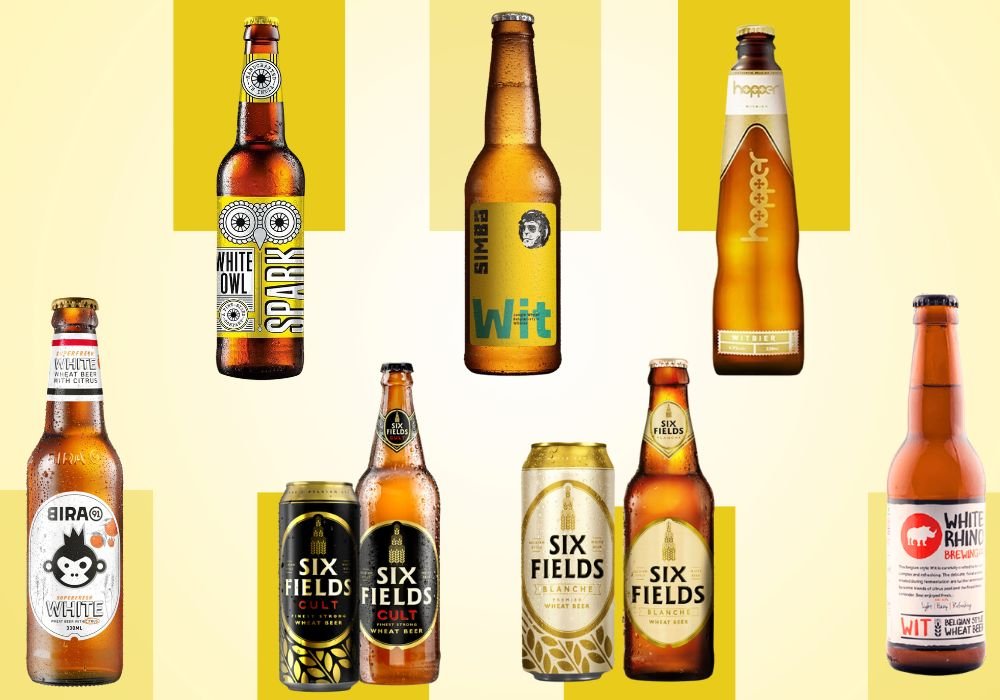Indian Beer History and Current Trends

John Eapen
Founder & Blogger, Tales of Froth
India’s tryst with Beer began centuries ago, as far back as 1500 BC. The composition was fermented barley and rice based beverages flavored with local fruits and spices. These beverages exist till today in select regions of the country. However, this isn’t what we know as modern-day Beer with malted barley, hops, yeast and water. It was the British that brought this type of Beer to this nation. In the late 1700s, ales made their way from England, as the climatic conditions in India weren’t favorable to brew beer. The trip to India took 6 months, crossing the equator twice.
Pale Ales and Porters being consumed by the British in India and this lead to the creation of a new style that was higher in alcohol content and its hop profile – the now infamous IPA or India Pale Ale.
The IPA’s demise was etched in stone well before the British left India. In the late 1800’s and early 1900’s opium, brandy, claret, whisky and gin (gin and tonic water) slowly replaced beer. When the British left, the IPA left with them. India’s pioneer brewers started brewing the style that had globally replaced pale ales – pilsners and lagers and our country was flooded with pilsners and lagers. Companies such as Mohan Meakin, United Breweries brewed lagers and eventually Hayward’s joined the bandwagon. Several other local breweries sprung up across the country. The end result – the creation of several lager variants and strong lagers too. Strong lagers are essentially high gravity lagers (between 6-8% ABV) brewed with a combination of malted barley and several adjuncts. On the palate these vary in their taste profiles with notable sweet, malty notes intertwining with fusel alcohols on the nose and at times harsh bitterness but all of these beers satisfy Indian’s palate and are considered value for money, yet strong.
The concept of draught beer from United Breweries in Bangalore in the early 80’s led to the early days of pub culture. This phenomenon gained momentum in the early 90’s, and soon Bangalore was labeled as the “Pub Capital of India”.
Indian tastes are skewed towards, sweetness as opposed to bitterness. One will notice that our lagers tend to have some residual sweetness with a lower on the IBU scale when compared to Europe, for instance.
Unfortunately, due to high excise duties and various other bottlenecks, beer isn’t the favored beverage amongst Indians. Our population might stand at 1.3 Billion, but our per capita annual beer consumption is a mere 2.6L/person per/year. When we look at China for example, their per capita annual consumption is around 50L/person per/year.
Till date, the number one best-selling style in India is the Strong Lager, in terms of volume year on year but one might ask if this will be the case in the next decade or so?
Well, to say that we are on the threshold of a Beer Revolution may not be stretching the truth. There is a change that is brewing albeit a movement that is still in its infancy but nonetheless one that is slowly exposing India to a variety of different beer styles. That revolution is the craft beer movement that started in New Delhi and Pune almost a decade ago with Brewpubs such as Howzatt & Doolally opening their doors to the public. The Ales the British left behind have re-appeared along with several other styles from countries around the world.
Other cities such as Bangalore and Mumbai soon followed suit and we began to see brewpubs and even craft breweries producing beer spring up over time. Over the course of the next few years, more. Tier 1 cities opened brewpubs and today, we have close to 150 brewpubs. Tier 2 cities have now started brewpubs, as well.
Haryana, Maharashtra, Karnataka, West Bengal, Telengana, Punjab, Goa and Odisha all have brewpubs. Uttarkhand, Andhra Pradesh & Kerala are next in line for microbreweries. States such as Maharashtra, Punjab and Goa have excise policies that allow B2B keg distribution. Maharashtra for example now has a few brewpubs that distribute their Beers to pubs and restaurants and also production craft breweries that keg their beers to retail outlets or their own taprooms. Progress has been made in Karnataka and the State now has a policy that allows production breweries to keg Craft beer but brewpubs are still forbidden from doing so.
There are 2 styles of Craft beer that account to 50-60% of brewpub revenues across the nation – wheat based ales namely the German style Hefeweizen and the Belgian Wit. It is no surprise that these styles are much loved. Both are low in bitterness, fruity/spicy and extremely sessionable. Lighter styles such as blonde ales and pilsners are also favorites. Beer such as Stouts, Porters & IPA/Pale Ales tend to be slow movers for the time being but as palates slowly evolve these trends could very well change.
There’s a lot of experimentation happening across the country. Breweries in Bangalore, Mumbai and Pune keep testing out new hop varieties and pushing Indian palates with High IBU IPAs. Additionally, seasonal fruits, coffee, chocolate, spices are all making their way into recipes. To hear that styles such as the IPA are moving up the popularity chart is comforting news. Dunkel Lagers & Ales and Saisons seem to be picking up the pace, as well. Two years ago, Arbor Brewing Co was the first to venture into Barrel Aging and now we have a few brewpubs actively engaged in aging beers in barrels to producing sour beers. Technically not beer but worth mentioning are Ciders & Meads which are being well received by the general public. These are all indicators of evolution in the sector.
Craft beer isn’t just limited to these States with microbreweries. In the last three years we’ve seen the emergence of packaged specialty beers in the shape of kegs, bottles and cans. These new products are helping evolve India’s palate. Production breweries that keg beers include brands such as Gateway Brewing Co, Ninkasi Brewworks, Kimaya Brewing Co, Great State Aleworks & Geist. Brands such as Geist, Bira, Witlinger, White Rhino & Simba are helping bring exposure to styles such as Belgian Wits, Stouts and IPAs in select markets through distribution of their bottles & cans. Brewpubs are now looking at packaging with the likes of White Owl who will launch their bottles in Goa in December 2017. New Brands such as Happy By Thirsty are set to launch their take on a German Hefeweizen and Arbor Brewing Company will be commissioning their production brewery in Goa in the next few months. Windmills Craftworks plan to set up their production unit in Goa, as well sometime next year.
Going forward this trend will continue to sprout new packaged Craft beer brands across the country. Commercial brands such as UB/Heineken and ABInBev are also bringing new imported beers into the country. So are independent importers who are bringing in a range of imported beers into India.
Breweries in Bangalore, Mumbai and Pune keep testing out new hop varieties and pushing Indian palates with High IBU IPAs. Additionally, seasonal fruits, coffee, chocolate, spices are all making their way into recipes. To hear that styles such as the IPA are moving up the popularity chart is comforting news.
Beer is certainly a buzz in the country at the moment but India has a long way to go to catch up with rest of the world. Excise laws vary by states and licenses involve a lot of red tape and there’s always a danger that more states could turn dry. In terms of production, there is a lot of work that remains to be done together with batch consistency and quality. Perhaps one day in the near future, we will see Indian beer brands winning awards abroad.
We also have a shortage of qualified brewers and the country certainly needs more training institutions and training seminars. The staff that man restaurants, bars and brewpubs often lack proper beer training and this usually results in a shortfall when it comes to consumer experience and awareness. Brewers guilds and associations need to be formed not just between craft breweries but with commercial ones too. At present in the country, there is no war between Commercial and Craft beer. We need to look at the bigger picture and both parties need to work together to promote beer and help push that per capita consumption figure higher. There is also a great need to educate the public about beer and hence a need for beer writers, sommeliers and enthusiasts to help spread the word.
Whilst some may say the future of beer is encouraging, there are others who are often more pessimistic and prefer focusing on the problems the industry faces. There will always be critics but one must not forget that the glass is always half full and not half empty. Together, nothing is impossible. The future literally is untapped, so please educate yourselves about beer and be the voice of Beer in your spheres of influence.



